The eth-netstats project provides a great dashboard interface for monitoring the status of an Ethereum Blockchain from the perspective of its nodes. The website https://ethstats.net/ reports statistics from an extensive list of Ethereum nodes on the public Ethereum Blockchain, however, the eth-netstats software that drives https://ethstats.net/ can also be used to monitor a Private Ethereum Blockchchain as I demonstrate in the previous article Deploy a Private Ethereum Blockchain on a Custom Kubernetes Cluster.
The eth-netstats service consumes Ethereum statistical metrics provided by individual Ethereum nodes. Check out the documentation on Geth if you are interested in running an Ethereum miner or transaction only node and pointing it’s statistical output to an eth-netstats instance.
In this article, I review each of the metrics displayed by eth-netstats, as both a means to better understand the eth-netstats utility as well as Ethereum itself.

Advanced Platform Development with Kubernetes
What You'll Learn
- Build data pipelines with MQTT, NiFi, Logstash, MinIO, Hive, Presto, Kafka and Elasticsearch
- Leverage Serverless ETL with OpenFaaS
- Explore Blockchain networking with Ethereum
- Support a multi-tenant Data Science platform with JupyterHub, MLflow and Seldon Core
- Build a Multi-cloud, Hybrid cluster, securely bridging on-premise and cloud-based Kubernetes nodes
See Ethstats in action at https://ethstats.net/ for a live example of Ethereum Blockchain metrics from miners on the public Ethereum blockchain.
The following table is a brief overview of the metrics displayed by eth-netstats starting from the top left, moving from left to right, row by row.
| Image | Metric | Description |
|---|---|---|
 |
Best Block |
The Best Block is last valid block with the highest amount of accumulated work in it on the main Ethereum Blockchain. |
 |
Uncles |
Uncles are orphaned blocks that were mined just after someone else found the correct block header. Ethereum treats orphaned blocks different than other blockchain systems by including them in the blockchain and rewarding miner for them. Ethstats displays the current block's uncle count and uncle count of the last 50 blocks. |
 |
Last Block |
Ethstats displays the elapsed time since the last block was mined. |
 |
Average Block Time |
The average time between block generation, not including uncles. |
 |
Average Network Hashrate |
The number of hashes per second processed by miners on the network in order to find a new block. The Network in this case being miners reporting to Ethstats. |
 |
Difficulty |
The current difficulty to mine a new block by finding a matching hash. |
 |
Active Nodes |
The number of nodes currently connected to the Ethstats service. |
 |
Gas Price |
Gas Price is the current price miners will accept for processing a transaction. |
 |
Page Latency |
The latency in time between a rendered Etherstats front-end dashboard (in your web browser) and it's backend data service. |
 |
Uptime |
The amount of time Etherstats has been running since started or re-started. |
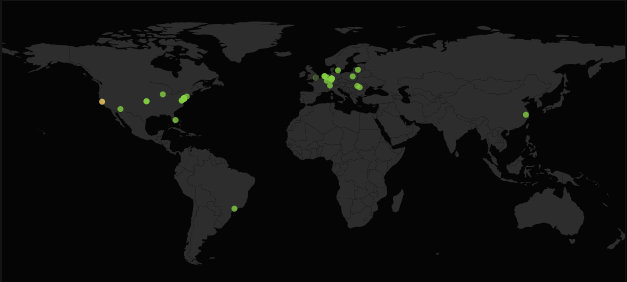 |
Geo Locations |
Location of Ethereum nodes reporting to Etherstats. |
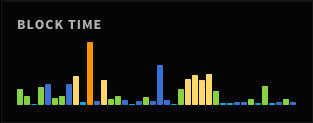 |
Blocktime Chart |
Blocktime averages over time. |
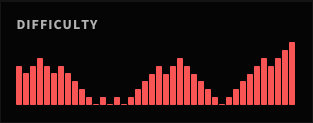 |
Difficulty Chart |
Difficulty over time. |
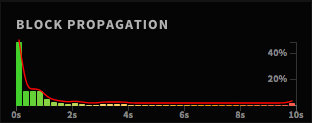 |
Block Propagation |
Block Propagation tracks the speed in which blocks are shared between nodes connected to Ethstats. |
 |
Last Blocks Miners |
Nodes that found the most Block, not including Uncles. |
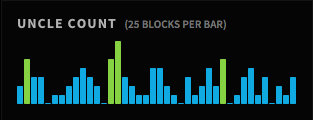 |
Uncle Count |
Uncle Count displays the number of Uncles generated. Each bar represents 25 blocks. |
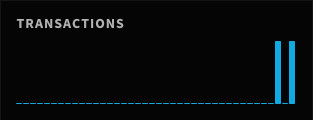 |
Transactions |
Displays the number of transactions included in the latest blocks. |
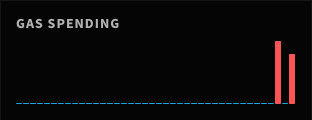 |
Gas Spending |
The amount of Gas spent on transactions in recent blocks. |
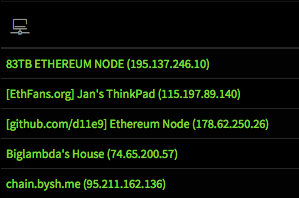 |
Node Name |
|
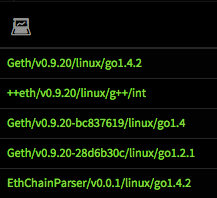 |
Node Type |
Type and architecture of connected Ethereum nodes. Common node types are Geth, Ethminer and Parity.
|
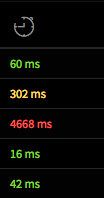 |
Node Latency |
The latency in time between the reporting node and Ethstats. |
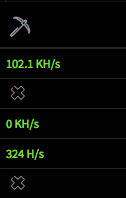 |
Node Miner Hash Rate |
The hash rate the node reporting to Ethstats. |
 |
Node Peers |
Number of peers connected to a specific node. |
 |
Pending Transactions |
Number of transaction pending for a specific node. |
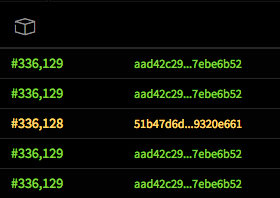 |
Node Last Block |
The Last Bock a specific node is aware of. |
 |
Block Transactions |
Number of transactions a blow is aware of and pending. These transactions will be added to the next block. |
 |
Node Uncles |
Number of Uncles a node has reported creating. |
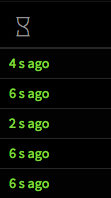 |
Last Block Time |
The last time a node was aware of a Block being created. |
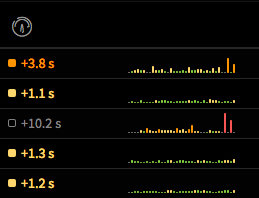 |
Propagation Time |
How long block takes to propagate to a node over time. |
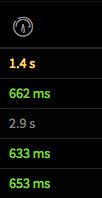 |
Average Propagation Time |
The average time it takes to propagate a block to this node. |
 |
Node Uptime |
Node Uptime reports the percentage of time a node has reported as running since connected to Ethstats. |
This blog post, titled: "Ethereum Ethstats: Learning the Ethereum Blockchain through its metrics." by Craig Johnston, is licensed under a Creative Commons Attribution 4.0 International License.

SUPPORT
Order my new Kubernetes book: Advanced Platform Development with Kubernetes: Enabling Data Management, the Internet of Things, Blockchain, and Machine Learning
